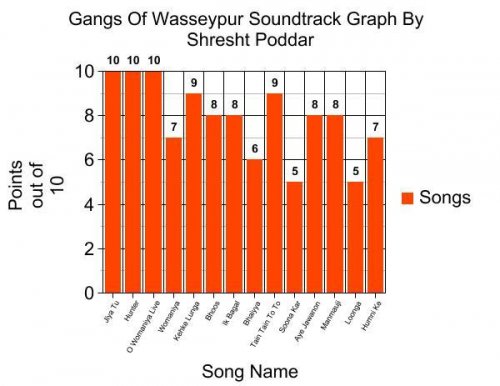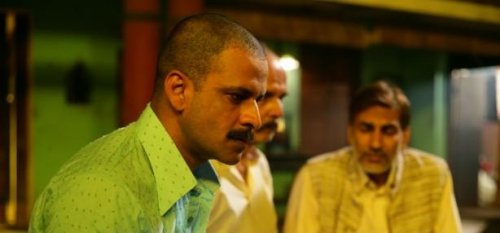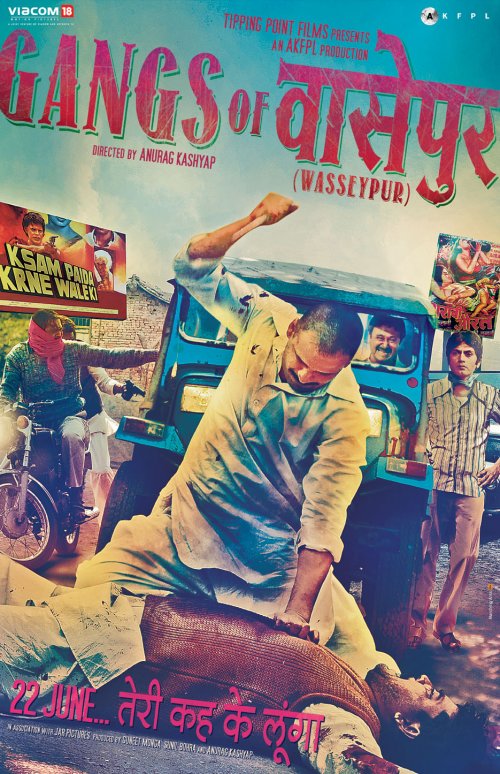
We bring to you the exclusive music review of Gangs Of Wasseypur.
Ever since I first heard about this movie, I believed that Wasseypur was a fictitious city spawn from director Anurag Kashyap’s eccentric mind going into overdrive. It turns out that Wasseypur is actually located in Dhanbad district of Jharkhand, India – which happens to be my maternal hometown. Irony? Lack of geographic sense? Say what you please.
Irrespective, Gangs of Wasseypur has found a high place in my list of 2012’s highly awaited movies and the sole reason behind this is Anurag Kashyap. This man has dared to deliver a multitude of extremely arty films with underlying dark themes – and they have worked – be it the morose Black Friday or the psychedelic Dev D to his most recent release, That Girl In Yellow Boots. His films beautifully exploit the genre of experimental cinema and despite of catering to a niche audience, they have found commercial success too. To sum it up, Anurag Kashyap promises sensible entertainment.
To be brutally honest, initially, I had next-to-no expectations from the soundtrack of this movie since I kept wondering how the inclusion of songs will be beneficial to a socio-political thriller of this sort. To understand my view, check out the official movie synopsis:
SYNOPSIS
Towards the end of colonial India, Sahid Khan loots the British trains, impersonating the legendary Sultana Daku. Now outcast, Shahid becomes a worker at Ramadhir Singh’s colliery, only to spur a revenge battle that passes on to generations. At the turn of the decade, Shahid’s son, the philandering Sardar Khan vows to get his father’s honor back, becoming the most feared man of Wasseypur. Staying true to its real life influences, the film explores this revenge saga through the socio-political dynamic in erstwhile Bihar (North India), in the coal and scrap trade mafia of Wasseypur, through the imprudence of a place obsessed with mainstream ‘Bollywood’ cinema
Got my point?
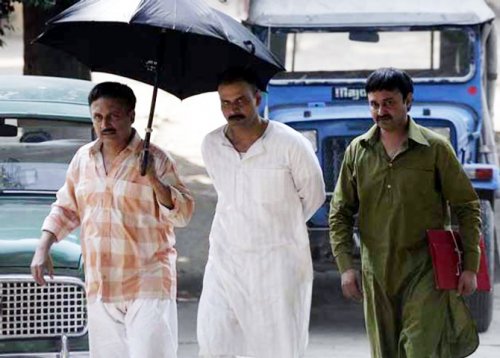
And then Mr. Kashyap decided to drop a bomb on his audience that the soundtrack of Gangs Of Wasseypur will comprise of a WHOPPING 25 tracks!
Yes, you read it right.
In a way it is understandable since the movie is to be released in 2 parts. Now that the soundtrack is out, the official tracklist consists of “only” 14 songs? Saving 11 for the next movie eh, Mr. Kashyap? Anyway, the soundtrack of Gangs of Wasseypur has been composed by Sneha Khanwalkar (of Oye Lucky! Lucky Oye! & Love, Sex Aur Dhokha fame). What kind of a soundtrack has she delivered? Let’s take a look.
The opening track Jiya Tu (Bihar Ke Lala) arrives like a storm and seriously sweeps you off your feet. The sound of, what seem to be, the Bongos and Damrus open this Indian rustic rock song which stunningly combines the best of both – Indian, as well as, Western instruments. Popular Bhojpuri actor/singer Manoj Tiwari (who hails froms Bihar) manages to capture the precise nuances of the Bihari dialect and reproduces the same in his rendition. At times, the track seems to be suffering from a Dil Dance Maare hangover and there are instances when you really feel that Kailash Kher is singing – their voices sound astoundingly similar in bits.
[youtube_video id=Xh7nyrpfP3M]
All said and done, this is one of the most complex songs I have heard in a long time, arrangement-wise and kudos to the music team for creating this song. Apparently, this song has been dedicated to Bihar for completion of 100 years of its existence. A super-duper special mention to the numbing guitar riffs (bass and electric) played throughout the song. This one is an instant chartbuster.
A relatively lesser known music genre called Chutney Music is the inspiration for I Am A Hunter. Chutney music is native to southern Caribbean, originating in Trinidad. It derives elements from traditional Indian music and popular Trinidadian Soca music. Be prepared to be shocked by the amazingly crude lyrics which put the best of innuendos to shame.
“I am a hunter and she want to see my gun,
When I pull it out, boy, the woman start to run.
She beg me to see it, she beg me to show it,
But when I reveal it, She want to run and hide.
Put on your hunting clothes, let we go and hunt
Please don’t be embarrassed, you could touch it if you want”
[youtube_video id=Y5PEr7ceqPE]
Believe me when I say this, the above is just the tip of the iceberg. To intrigue you further, there is a line which goes as follows: “Daily goli nikle, Automatic, tan-tan”. Let your imagination run wild now. You need to listen to this song to truly appreciate it:
Sung by Vedesh Sookoo, Rajneesh, Shyamoo & Munna, this fresh innovative peppy song makes you wonder why such music hasn’t been heard a lot. Top-notch!
I made the mistake of keeping my speakers on the highest volume which nearly caused temporary deafness thanks to the beginning of O Womaniya Live. (The song titles just seem to be getting more cooky with each progressing song). This one is a very playful, masti-mazaak song which seems to belong to a wedding mehfil setting where a large number of people have congregated. Truly speaking, the song has such a realistic air to it that you might think you are hearing it first-hand. It seems like the intention of appending the word Live to the song title has paid off. A worth mention to the singers Khushboo Raaj & Rekha Jha who take the phrase ‘infusing life into a song’ to a whole new level.
Another version of O Womaniya ensues which seems so unrealistic when compared to the Live version. The complexity of the arrangements coupled with the mish-mash of God-only-knows-how-many instruments cause the song to spiral downwards. An interesting hear nonetheless.
Keh Ke Lunga is up next. Just to clarify, in this case, it implies ‘I will not attack you from behind’ – not the sexual slang. The beauty of this song is the feeling of suspense generated by the initial interludes which pave the way for some funky background variations, smooth vocals and scintillating lyrics. Sample this:
“Ras bheege saude ka ye khooni anjaam, teri keh ke lunga,
Khanjar se doodh gire aur ho qatl-e-aam, teri keh ke lunga,
Ho saanson ko saanp sungha ke, Jungli tilchatta la ke, keh ke lunga,
Bichhoo se hoth kata ke, Lori zehreeli gaa ke, keh ke lunga”
Singers Sneha Khanwalkar & Amit Trivedi have done a great job with this one. By the way, Keh Ke Lunga also happens to be the tagline of the movie. Funnily, this seems like a track out of a Ram Gopal Verma flick. I would love to know whether you agree with me on this.
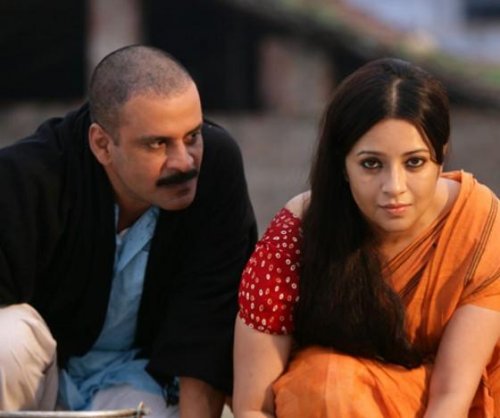
Despite being a situational song, Bhoos has the quirkiest lyrics till now.
‘Bhoos ki dher mein rai ka daana, Rang biranga bail sayaana,
Duje peher mein, tootta taara, Pani mein tirkha, palta paara,
Na mili hai, na mili hai, na mili hai na.”
Sung by Manish J. Tipu & Bhupesh Singh, one can envision this song to be picturised on a group of eunuchs parading in a rural celebration setting. Once again, situational yet funky.
Ik Bagal Mein Chand Hoga has a very unique archaic musical style. This will remind you of the sad, as well as, inspirational songs of the 60s and 70s – such is its handling. Yes, the dichotomy of my analysis is a bit unnerving but the song is dominated by a mournful soul and despite the odds, it wants to break free and succeed. Complemented by the sounds of the flute and sitar, Piyush Mishra has composed, penned and sung this emotion-stirring song. Personally, I would’ve preferred another baritone – but Piyush heavily adds the desired element of rusticity.
Bhaiyya is this extremely weird Bhojpuri song sung by The Musahar Of Sundarpur. The slow rendition of the words amidst a fast paced backdrop really adds to the aural effects of this otherwise-situational song. I am looking forward to seeing how this song will be utilized in the movie.
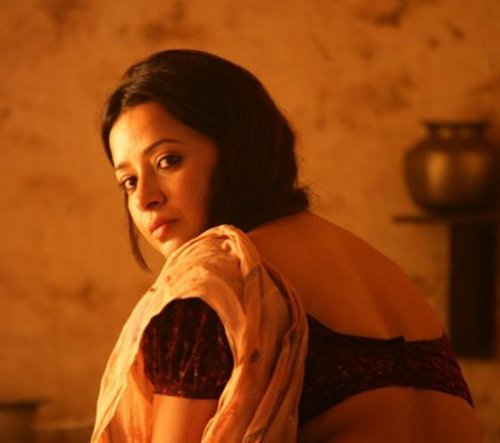
By far, Tain Tain To To holds the awards for the most unique song of the lot. This one has no lyrics – yes, I speak the truth. A relatively fast paced song with Sneha Khanwalkar mouthing weird sounds like ‘Tain Tain To To’ or ‘La Lee Lee La’. Till the end of the song, I kept waiting for some coherent words – and to my surprise, there came none. THAT is the awesomeness of this weird song. This one is a perfect fit for a chase sequence (in a way!) or with my imagination running wild, a song mouthed by a mute girl.
Just when you start to think that this album cannot surprise you any further, the rural Soona Kar Ke Gharwa leaves you wondering. With a run time of exactly two minutes, this short and simple track is more of an instrumental interspersed with a handful of lines yelled by Sujeet-Gaya. One cannot help but question its usage. Quite random, I must say.
One of my newest favorite tracks of this album is Aye Jawanon. The only vocals heard during its 1.54 minute runtime are the words of the following AMAZING shayari:
“Aye Jawanon, Garibi Tod Deti Hai Jo Rishte Khaas Hote Hai,
Garibi Tod Deti Hai Jo Rishte Khaas Hote Hai,
Aur Paraaye Apne Hote Hai Jab Paise Paas Hote Hai.
Har Yaar Vafadaar Nahi Hota, Har Patthar Chamakdaar Nahi Hota,
Na Jaane Van Mein Kitne Phool Khile Hai, Har Phool Khusbhudaar Nahi Hota.”
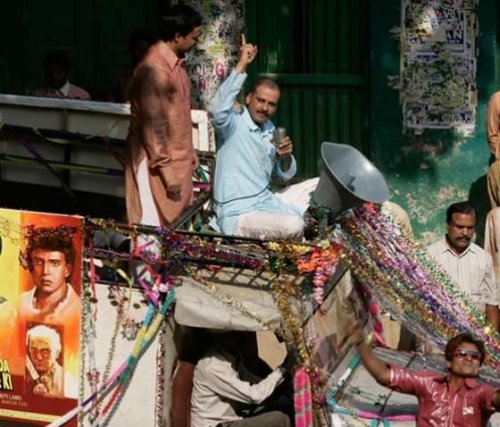
This one is probably based on Yashpal Sharma’s character from the movie. He essays the role of an item boy who thinks of himself as a Kishore Kumar but in reality is a terrible singer. Sung by Ranjeet Baal Party, I have a distinct feeling this group is the name of Sharma’s on-screen “band”.
Undoubtedly the most commercial song of the lot, the highly-folksy mischievous Manmauji instantly appeals to the ears. The song’s inherent charm does the intended job – it entertains its listeners. Usri Banerjee’s ‘gaonwali’ (villager) voice is beautifully harmonized by the addictive sound of the ghungroos and the tabla. Though I must admit, various portions of this song remind me of Kyun Aage Peeche from Rohit Shetty’s Golmaal.
The next track, Loonga Loonga seems to be a remixed version of Keh Ke Lunga and Aye Jawanon. The fusion of the two tracks is interesting but nothing great. A very pointless track to be honest.
The album comes to a sublime end with a Bhojpuri Bhajan dedicated to Goddess Durga (Maa Sherawali). Humni Ke Chhodi Ke plays out in, what I believe is, the sound of a child – Deepak Kumar – Muzzafarpur, that too with a single instrument – the harmonium. A worthy end to an otherwise fantastic album.
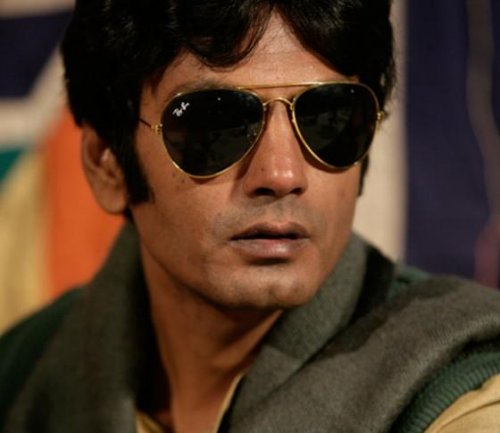
Gangs of Wasseypur is undoubtedly one of the best albums released till date in 2012. Music Director Sneha Khanwalkar deserves the best of accolades for daring (and actually succeeding) to come up with the wackiest, quirkiest, weirdest of tunes one has heard in a long time. The songs stay true to the essence of the movie and manage to capture the flavor of rural North India without seeming ostentatious. In fact, I bow down to her for managing to liven up the songs by making them sound so real. It is a gargantuan feat to compose 14 songs for an album and making sure that none of them overlap nor overshadow each other in terms of handling, melody and quality. Sceptics might argue citing the situational feel of some of the songs but the fact is the album rides high on originality. Also, a shout-out is in order for the lyricists – Piyush Mishra, Vedesh Sukoo, Varun Grover for fully utilizing their creative poetic juices. The blatant Indianness of the songs really touch the heart-strings and this gem of an album HAS to be heard by you.
I rest my case.
SHRESHT’S PICKS : ALL OF THEM – except Soona Kar Ke Gharwa.
RATING: **** out of *****.
Stay tuned to www.highonscore.com for regular musical updates.
Hark ye, padawaans! Follow the musical force on Twitter @highonscore
Follow Shresht Poddar on Twitter @shreshtpoddar & Facebook @shreshtpoddar
